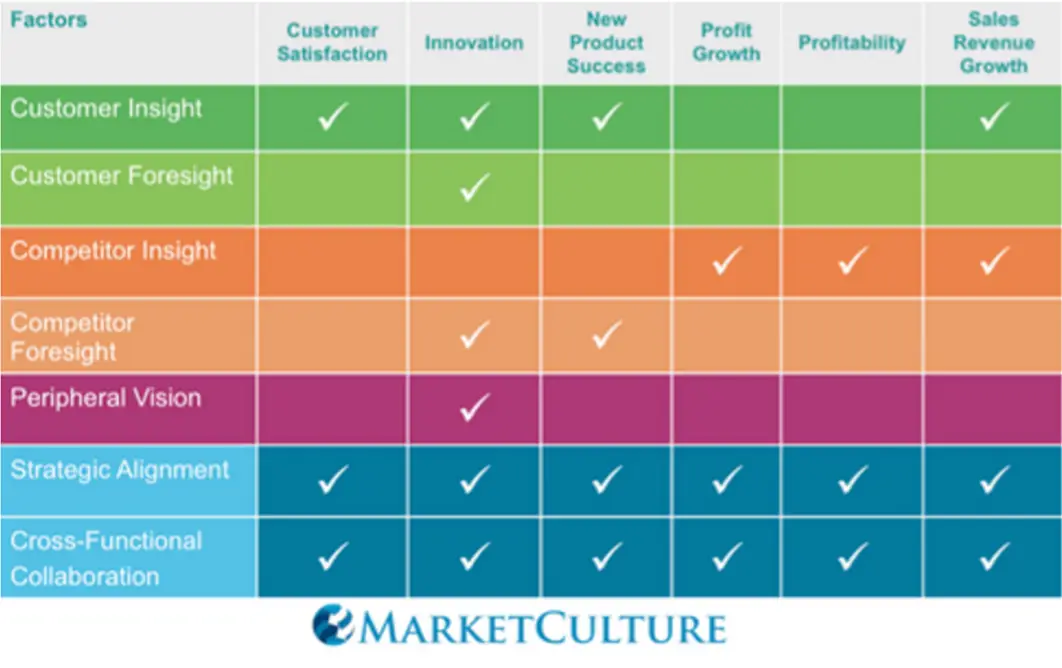The Factors that Drive Amazon’s Success
The business world is flooded with MBAs, formally trained to be “startup ninjas”. These individuals have attended elite business schools and been doused in the technical aspects of starting a business. They use fancy terms like “customer acquisition cost” and “quantitative marketing analysis” that they believe will lead to a successful startup if they are properly utilized – these are tried and true methods that have been studied, debated, tested, and taught for many years.
A + B = C
I am not going to give a business 101 lecture. However, I believe it is important for those who are unaware to understand some of the factors that contribute to the success of a business.

When reviewing this chart, ask yourself how well Amazon performs in each of these areas. It will not take you much time to realize that Amazon has all of these areas covered very well. There are some who will argue that Amazon’s attention to all these important areas of business is why they are so successful. Those who rely only upon metrics and what meets the eye will not understand the rationale to follow – and these are the people who will remain only moderately successful forever. Practicing a rigid business model that has been proven to work is a surefire way to guarantee the success of startup after startup, from start to finish.
A + B = C
There is much more than meets the eye behind Amazon’s success, though. I do not believe any rational person would argue that Amazon does not perform extremely well in all areas on the above chart. So, is that the key to building an industry empire? Does performing exceptionally well on the typical “Keys to a Successful Startup” checklist and their success will reflect accordingly? I don’t think so.
What is A + B + X = ?
I can tell you that there are many men wandering around this planet broke, hopeless, and unsuccessful who believe very well that they know the answer to this equation. What is “X”?
“X” comes in many sizes, shapes and forms.
“X” is your dream come true.
“X” is your worst nightmare.
“X” will leave you counting pennies for a meal.
“X” will allow you to eat like a king.
So, what is “X”?
If an entrepreneur decides to add an “X” factor to their startup business, they are taking substantial risks. There is a direct correlation between risk and reward, and any case study will prove this to be true. Without question, Jeff Bezos added his “X” factor to the business plan of Amazon, and that is why they are where they are today.
In the year 2016, it does not take enormous courage or insight to launch an e-commerce business that operates strictly on the internet. Rewind the tape back to 1994, though, and this approach was often laughed at. There were many people who did not understand how the internet was shaping up to take the world by storm, and did not have the insight to pay it the respect it deserved. Jeff Bezos, on the hand, did.
Jeff Bezos referred to his startup as his “regret minimization framework.” There are some unfortunate people who live their life reminiscing over past events. There are many people who are content with taking in life as it comes to them each day and adapting accordingly. There are few people who are capable of observing the present, understanding the current factors of the time, and crafting their lives around what they believe is to come.
Most people play checkers. Jeff Bezos plays chess.

Due to Jeff Bezos’ insight and ambition, Amazon had a head start in terms of e-commerce. Being an early pioneer is not the sole factor to success, though.
I will tell you what Amazon’s “X” factor is. It consists of three things:
- Constant commitment to innovation
- Embedding the “14 Leadership Principles” in the company’s core mission
- The one universal commodity that Amazon really sells: time
Constant Commitment to Innovation. Amazon spends billions on research and development every year. Many companies do not see the value of allocating a significant portion of their budget to R & D. Amazon knows very well that in order to remain the industry empire and continue to grow, they have to be willing to sacrifice certain assets to do so.
Embedding the “14 Leadership Principles” Deeply in the Company’s Core Mission. 9 out of 10 corporate websites have some corny page on their website with their mission statement and some general principles that they claim to operate under at all times. We all know this is nonsense. I have met former “Amazonians.” These principles are not your typical nonsense PR tactics that a company is attempting to portray they believe in. These principles are severely drilled into each and every Amazon employee. The results of this are remarkable. Jeff Bezos has gotten a large portion of his company to adopt these principles. Do you have any idea how powerful this is? When an employee comes to work for a paycheck, they come to work, do what needs to be done and goes home. Jeff Bezos is a great leader that has convinced his employees to spiritually invest in his company, and they will go to war for him.
The one universal commodity that Amazon really sells. All of the above is very important. This last point is the very deep “X” factor of Amazon. Most people have no idea about what it is, but I am about to share it with you. Amazon is a huge marketplace that has just about anything you could want to buy, but so do most malls. One of my favorite authors/marketing geniuses that I have studied is Gary Vaynerchuk. This man is on a whole other level. I was recently listening to a keynote talk that he gave. In his talk, he touches on how he failed to see the value in Uber. He had tunnel vision and thought Uber would fail because a glorified taxi service would be short lived. He was clearly very wrong, which he admits to. What Gary failed to realize is that Uber sells time.
That is Amazon’s “X”: Along with low prices, free shipping, customer satisfaction and a rapid shipping speed, every order comes with time. The most precious human commodity is time. Can you imagine how many hours have collectively been saved since consumers have shifted from journeying to the mall to buy a pair of sneakers to pulling out their smartphone and hitting the “buy now” button?
Insight – Innovation – Principles – Time
This is why Amazon has been so successful.
